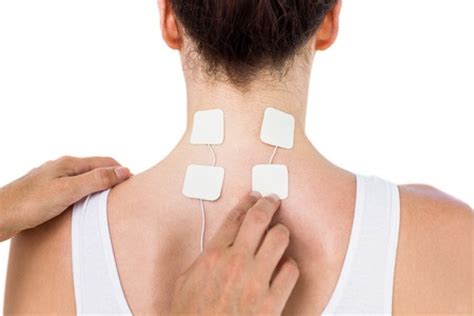-

-
About Us
- Our Vision
-
Personalized Care
Personalized Care Personalized Care Intro
Diagnostic Tests
- Digital X-Ray
- DynaROM
- 3D Body Scanning
- Gastrointentinal Health
- Organic Acids
- Comprehensive Stool Analysis
- Food Sensitivity
- Dietary Antigen Complete
- Endocrinology
- Thyroid Panel
- DUTCH Hormone Test
- Neurotransmitter Profile
- Adrenal Profile
- Nutritional Status
- Vitamin D
- Homocysteine
- Methylmalonic Acid
- Urine Iodine
- Organic Acids
- Copper Zinc Profile
- Essential Fatty Acid Profile
- RBC Metals & Minerals
- Toxic & Essential Elements
- RBC Elements
- Urine Toxic Metals
- Hair Metals & Minerals
- Urine Halides
Treatments
- Avacen Therapy
- Bioidentical Hormone Replacement Therapy (Anti-Aging)
- Chiropractic Care
- Electric Muscle & Nerve Stimulation
- Emsculpt Neo
- Emsella Treatment
- Erchonia Laser (Model EVRL)
- Exosomes
- Hair Restoration
- Headache & Migraine Treatment
- Hyaluronic Acid Injection
- Intersegmental Traction
- IV Nutrient Therapy
- Laser Lipo
- Massage Traction Chair
- PRP Facials
- PRP for Erectile Dysfunction
- PRP for Female Sexual Dysfunction
- PRP for Pain Relief
- PRP for Urinary Incontinence
- Semaglutide
- Shockwave Therapy for Cellulite & Skin Tightening
- Shockwave Therapy for Pain Relief
- Shockwave Therapy for Female Sexual Dysfunction
- Shockwave Therapy for Male Sexual Dysfunction
- Skin Rejuvenation
- Spinal Decompression
- TENS Unit
- Testosterone Replacement Therapy (TRT)
- Therapeutic Ultrasound
- Thyroid Care
- Trigger Point Therapy
- Durable Medical Equipment
- Ankle-foot Orthosis
- Cervical Rehab Coller
- Custom Foot Orthotics
- Lumbosacral Orthosis
- Osteoarthritis Knee Brace
- Wrist Brace
- FAQs
- Testimonials
- Pain Relief
- Weight Loss
-
Sexual Wellness
-
Anti-Aging
-
Resources
- Blog
- Video Library
- Store
-
Health Condition Library
Health Condition Library
- Ankle Osteoarthritis
- Bulging Spinal Disc
- Carpal Tunnel
- Cervical Degenerative Disc Disease
- Cervical Radiculopathy
- Elbow Bursitis
- Erectile Dysfunction
- Fatigue
- Female Hormone Imbalance
- Female Sexual Dysfunction
- Fibromyalgia
- Foot Arthritis
- Frozen Shoulder
- Golfer’s Elbow
- Hand Arthritis
- Headache
- Hip Bursitis
- Hip Osteoarthritis
- Hyperthyroidism
- Hypothyroidism
- Knee Bursitis
- Knee Osteoarthritis
- Low Testosterone
- Lumbar Degenerative Disc Disease
- Migraines
- Musculoskeletal Pain
- Obesity
- Osteoarthritis
- Plantar Fasciitis
- Plantar Fibroma
- Rotator Cuff Injury
- Sciatica Pain
- Shoulder Bursitis
- Shoulder Osteoarthritis
- Tennis Elbow
- Thoracic Degenerative Disc Disease
- Urinary Incontinence
- Weight Gain
- Wrist Arthritis
- Wrist Bursitis
- Contact
Empowering Health: The Comprehensive Guide to Electric Muscle Stimulation

In the dynamic field of medical therapies, Electric Muscle Stimulation (EMS) treatment, has emerged as a revolutionary approach to enhance muscle function and promote overall well-being. This article delves into the medical intricacies of EMS, exploring its applications, usage, and the manifold benefits associated with the innovative Electrical Muscle Stimulator devices.
Understanding Electric Muscle Stimulation:
Electric Muscle Stimulation involves the application of controlled electrical impulses to targeted muscles and nerves. This therapeutic approach mimics the body’s natural signaling mechanisms, inducing specific physiological responses. The primary objectives of EMS include muscle strengthening, pain management, rehabilitation, and enhancing overall physical performance.
Applications of Electric Muscle Stimulation:
- Rehabilitation After Surgery or Injury:
- Facilitates controlled muscle contractions, aiding in post-surgical and post-injury rehabilitation.
- Maintains muscle tone, prevents atrophy, and accelerates the recovery process.
- Pain Management:
- Used in chronic pain conditions such as neuropathy, fibromyalgia, and arthritis.
- Modulates pain signals by activating sensory nerves, providing non-invasive pain relief.
- Enhancing Physical Performance:
- Complements training routines for athletes and fitness enthusiasts.
- Aids in muscle strengthening, conditioning, and recovery, contributing to improved physical performance.
- Neurological Rehabilitation:
- Applied in the management of neurological disorders such as stroke, multiple sclerosis, and spinal cord injuries.
- Stimulates nerves and muscles, supporting neuroplasticity and functional recovery.
- Urinary and Pelvic Floor Disorders:
- Addresses urinary incontinence and pelvic floor disorders.
- Strengthens pelvic floor muscles through controlled electrical stimulation.
Benefits of Utilizing an Electrical Muscle Stimulation:
- Muscle Strengthening:
- Promotes muscle contractions, aiding in muscle strengthening and toning.
- Beneficial for individuals with muscle weakness, atrophy, or those undergoing rehabilitation.
- Pain Relief:
- Modulates pain signals, providing relief for various chronic pain conditions.
- Acts as a non-invasive alternative or complement to pain management strategies.
- Accelerated Recovery:
- Facilitates controlled muscle contractions, contributing to faster recovery after surgery or injury.
- Prevents disuse-related complications by maintaining muscle activity.
- Customized Treatment:
- Adjustable parameters allow for personalized treatment plans.
- Tailored to individual needs, optimizing therapeutic outcomes.
- Non-Invasive Approach:
- Provides a non-invasive alternative for pain management and muscle stimulation.
- Minimizes the need for pharmacological interventions in some cases.
Conclusion:
Electric Muscle Stimulation Treatment stands at the forefront of medical innovation. Its diverse applications, from rehabilitation to pain management, underscore its versatility and effectiveness. As technology continues to advance, Electrical Muscle Stimulators are poised to play an increasingly vital role in the holistic care of patients, empowering individuals to achieve optimal health and well-being through innovative therapeutic approaches.








